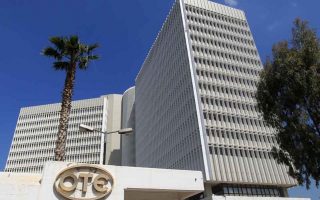Economic enlargement: How much and for who?

Perhaps the Ministry of Finance is more restrained when it comes to growth predictions for the Greek economy in 2021, estimating it at around 3.6%. Even the equally restrained Bank of Greece sees growth at 4.2% this year, and at 5.3% in 2022.
One issue is that, in a country where tourism is almost our only product, that growth is heavily dependent on tourism revenues. These revenues came to 18 billion euros in 2019 and €4.3 billion in 2020, and are projected to reach €6 billion in 2021, visibly lower than the initial projection of €8 billion.
A second issue is the stability of the enlargement. The Bank of Greece underscores that the structural problems of our economy are still unresolved and notes six long-term risks, the first two being dual deficits and debt.
There is another issue connected to the above: the diffusion of the growth. It is one thing to have economic enlargement being driven by the business activity of a few investors and large groups, with the limited activity of local entrepreneurs and with high imports, and another to have economic enlargement being driven by a broad mobilization of Greek businesses, labor and resources. This second model is heavily aided by tourism, which will be limited this year. The growth fund focuses on the former model, empowering the larger, more dynamic and modern economic players.
The rate of economic enlargement is not a guarantee of broad economic growth. Positive growth rates may be fully compatible with the total destruction of one sector of the economy – in reality this is not an exception but a rule. Apart from the general widening of inequalities, a Greek peculiarity is that the sector of the economy that suffers most is that employing the most people. I am referring to the archipelago of small businesses, each employing three to four individuals. Right now, some 200,000 such businesses may close for good.
This process will accelerate after December 31, when all transition programs end and state funding that allowed families and small businesses to survive the pandemic ceases. Together, they had also kept zombie companies on life support – companies that ought to have closed long before, but stayed alive so long as the state paid the rent, the electricity bills and the salaries. These state programs end in the fall, and because the banks will be disinclined to fill the state’s role, so will the grace period. The repercussions from the destruction of thousands of unsustainable jobs will be felt in the economy. These jobs cannot be saved, and nor should they. But there should be a plan in place for the protection of the families that will suffer, so that no one is left behind. And there isn’t.





